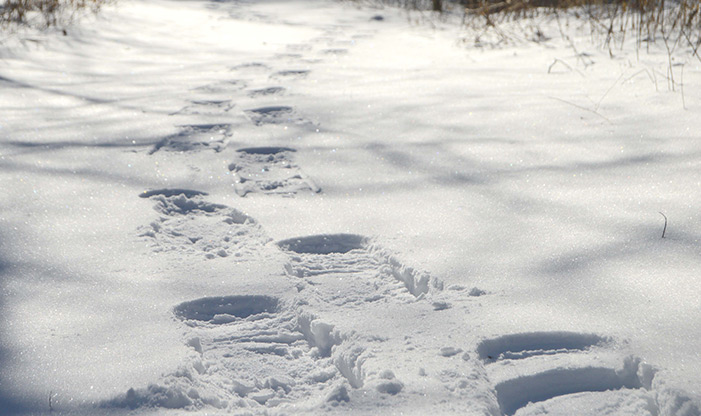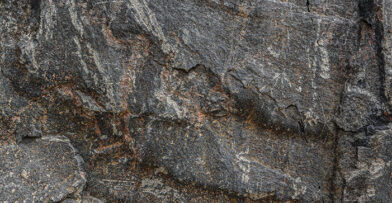For the adventuresome, myriad possibilities await for those looking to discover the haunts and byways of active winter animals. It’s not necessary to travel far in search of adventure. Schlitz Audubon is the perfect place to get away for a few hours, while being just minutes from home. During cold months, one of the best ways to be immersed in the winter landscape is the time-honored tradition of snowshoes.
A Long History of Snowshoes
Humans have strapped slabs of wood to their feet for over 6,000 years. It is believed that North American inhabitants who crossed the Bering Sea Land Bridge created snowshoes, an evolution from skis. Evidence even suggests the first human inhabitants of North America arrived here precisely because of their resourcefulness at constructing this footwear.
It allowed them to travel extremely long distances over difficult terrain. Both skis and snowshoes distribute the wearer’s weight more evenly across the snow, allowing one to float on top instead of sinking down. This is the same reason the cold weather Canada Lynx possesses cartoonishly large feet compared with the warmer climate Bobcat. One might consider snowshoes an ancient example of biomimicry.
When building snowshoe frames, white ash wood was preferred for its pliability. But, makers used whatever wood was available locally. Frames were then laced with rawhide. The styles range from impressive names like Bear Paw (in forested areas), Yukon (for long distances and deep snow), and the versatile Beavertail (which combines the best features of both). Depth of snow, level incline, rocky or smooth terrain, and distance of travel are all factors that reflect the variety of designs.
Modern Day Snowshoes
Modern snowshoes are now mostly lightweight aluminum frames. They’re much smaller and easier for beginners and children to maneuver. Lacing made from nylon or neoprene, the material wet suits are made from, has largely replaced rawhide. Bindings can be made from any manner of materials. They just have to strap wearer’s boots to the snowshoe and allow the foot to rotate while stepping.


